Rabies in Ethiopia
Each year, thousands of people are infected with rabies in Ethiopia and an estimated 2,700 people die—one of the highest rabies death rates in the world– but the true number of deaths caused by rabies is unknown because the disease is underreported and rabies diagnostic laboratories are not established. Furthermore, few places in Ethiopia offer life-saving human rabies post-exposure prophylaxis (PEP) and most people don’t have the means to make it to a major hospital to get treated. In addition, people’s awareness about what to do if bitten by dogs is low, and people often do not seek medical help when bitten.
The human risk for rabies is directly linked to the high rate in dogs, which is why it is important to hit the disease at its core – vaccinating dogs. However, like many other countries with high human rabies death rate, the rabies vaccination coverage among dogs is very low in Ethiopia, far below the 70 percent needed to halt the transmission of canine rabies. This is partly due to lack of awareness about rabies vaccination among dog owners and high number of stray dogs in the country. The total number of animal rabies cases in Ethiopia is unknown, but with a rural and farming population of more than 80%, annual livestock losses caused by rabies place a large societal and economic burden on the country.
As part of Global Health Security Agenda activities, CDC rabies experts and partners have been consulting with Ethiopian government on building an effective national rabies elimination strategy.
In 2016, members of CDC’s Poxvirus and Rabies Branch (PRB) visited Addis Ababa to train local animal surveillance officers and veterinarians to safely catch, vaccinate, and release stray dogs. They also trained local health officials on how to monitor human exposures to potentially rabid dogs and keep a record of human cases, exposures, and PEP treatments.
In 2017, the training included organizing mass dog vaccination campaigns, building rabies laboratory diagnostic capacity and expertise, manufacturing a safe vaccine, and creating rabies awareness materials for the general public. Over 7,000 dogs have been vaccinated in Addis Ababa in 2017 as part of the mass vaccination trainings. The work continues to establish three state-of-art rabies diagnostic laboratories across the country and assist with mass vaccination campaigns outside of Addis Ababa.
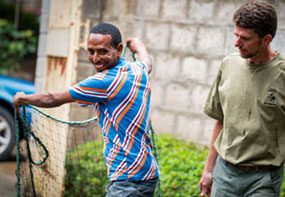
An Ethiopian animal rabies surveillance officer practices throwing a net to safely capture street dogs for vaccination.
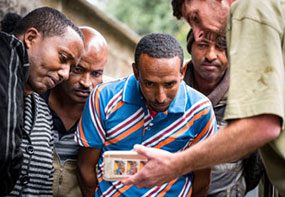
The trainees watch a slow-motion video of their technique on a cell phone.
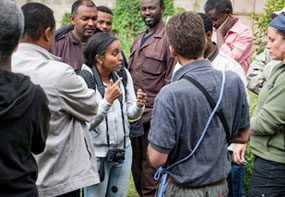
CDC’s Meseret Birhane (center) explains in the local Amharic language how the team can work together to vaccinate dogs in a community.
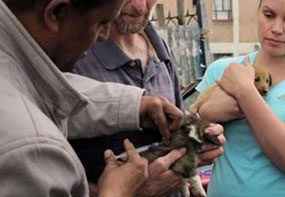
An Ethiopian veterinarian vaccinates a puppy while Daniel Stewart (GARC) and Dr. Emily Pieracci (CDC) observe.
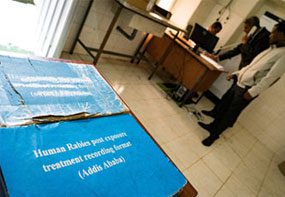
Rabies surveillance officers contact bite victims by phone to ensure they receive all doses of post-exposure prophylaxis (PEP).
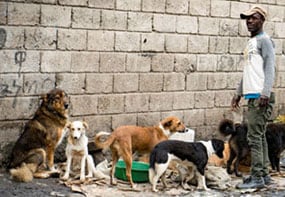
Street dogs in Addis Ababa often have close bonds with community members who welcome the vaccinators and help the team vaccinate the dogs.
